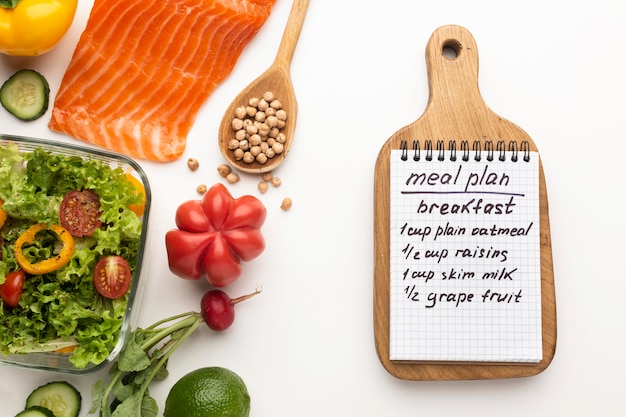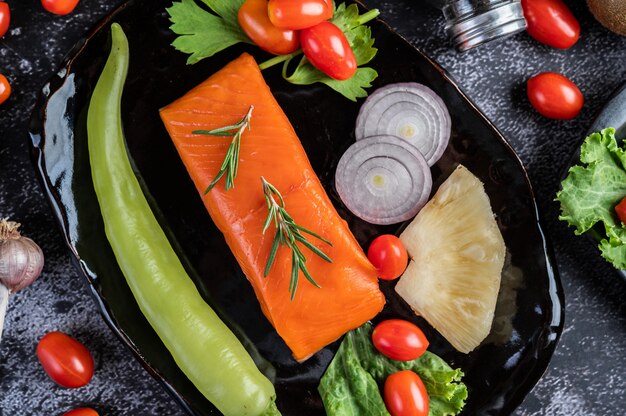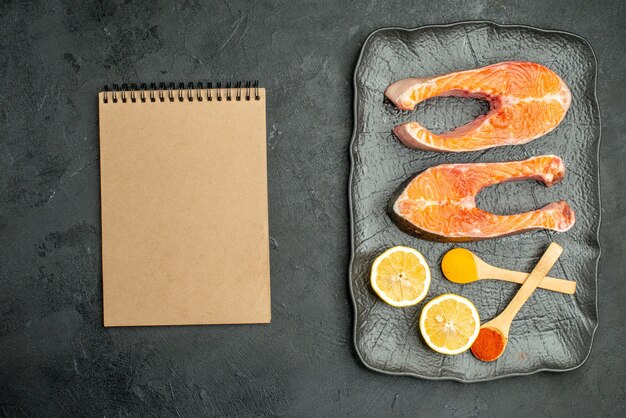(Part 1) - The Basics

1.1 choosing the right salmon
So, you’ve decided to cook salmon. Excellent choice! Now, it’s time to pick your fish. While both wild-caught and farmed salmon are delicious, I personally prefer the taste of wild-caught salmon. It often has a more intense flavor and a beautiful, vibrant pink hue. But regardless of the origin, look for a piece that’s firm to the touch, with a fresh, bright colour. Avoid any salmon that appears dull, slimy, or has a strong odour - these are signs that it’s not fresh and won’t cook up as well.1.2 The Importance of Temperature: The Key to perfect salmon
Here’s where the real magic happens. You want your salmon to reach an internal temperature of 145°F (63°C) for it to be safely cooked through. But this doesn’t mean you want to cook it until it’s dry and crumbly. overcooked salmon is a real bummer. The key is to cook it just to the point where it’s flaky and juicy – that’s the sweet spot we’re aiming for.1.3 cooking times: A General Guideline
The cooking time for salmon depends on its thickness and the method you choose. But here’s a general guideline to get you started:- 1-inch thick: About 4-6 minutes per side.
- 2-inch thick: About 8-10 minutes per side.
- 3-inch thick: About 12-15 minutes per side.
(Part 2) - Cooking Methods: Let's Get Practical!

2.1 Pan-frying Salmon: Quick and Delicious
Pan-frying is my go-to method for a quick and easy weeknight dinner. It’s incredibly simple and produces beautifully browned, flavorful results. Here’s how to do it:- Heat a good quality pan over medium heat. A cast iron pan is ideal, but any heavy-bottomed pan will work.
- Add a drizzle of olive oil or butter to the pan. I love using a combination of both for a rich flavour.
- Season your salmon generously with salt and pepper. I also like to add a pinch of paprika or garlic powder for extra flavour.
- Gently place the salmon in the pan, skin-side down, and cook for about 4-6 minutes per side, depending on the thickness. Be careful not to overcrowd the pan.
- You’ll know it’s ready when the fish is opaque and flakes easily with a fork.
2.2 baking salmon: Foolproof and Flavorful
Baking salmon is a wonderful option if you’re looking for a hands-off method. It’s also a great choice for cooking multiple portions at once. Follow these steps:- Preheat your oven to 400°F (200°C).
- Line a baking sheet with parchment paper. This will help prevent sticking and make for easier cleanup.
- Season your salmon as you like. You can use the same seasoning as you would for pan-frying or get creative with herbs, spices, and glazes.
- Place the salmon on the baking sheet and bake for about 15-20 minutes, depending on the thickness.
- Check for doneness with a meat thermometer. The internal temperature should be 145°F (63°C).
2.3 Grilling Salmon: A Taste of Summer
grilled salmon is a delightful summer treat, especially when enjoyed outdoors. The smoky flavour and grill marks create a delicious and satisfying meal. Here’s how to grill salmon like a pro:- Preheat your grill to medium heat.
- Clean the grill grates to prevent sticking. You can use a grill brush or a damp paper towel.
- Season your salmon. I like to use a simple blend of salt, pepper, and lemon juice for a bright and fresh flavour.
- Place the salmon on the grill and cook for about 4-6 minutes per side, depending on the thickness.
- You’ll know it’s ready when it’s flaky and has nice grill marks.
2.4 Poaching Salmon: Gentle and Delicate
Poaching salmon is a fantastic way to create a delicate, flavourful dish. It’s a gentle cooking method that results in a tender, moist texture. Here’s how to poach salmon:- Combine water, wine, or broth in a saucepan. You can use any flavour profile you prefer. For a classic flavour, use white wine and add a few sprigs of fresh dill.
- Add herbs, aromatics, and spices to create your desired flavour profile. Some popular options include bay leaves, thyme, garlic, and peppercorns.
- Bring the liquid to a simmer. You don’t want it to be boiling, just gently simmering.
- Gently place your salmon in the liquid and cook for about 10-15 minutes, depending on the thickness.
- Remove the salmon from the liquid and serve.
(Part 3) - Mastering the Internal Temperature: Your Salmon's Secret Weapon

3.1 Using a Meat Thermometer: Simple and Accurate
Using a meat thermometer is incredibly easy:- Insert the thermometer into the thickest part of the salmon, making sure it doesn’t touch any bone.
- Leave it in place for about 10 seconds to ensure an accurate reading.
- Once the temperature reaches 145°F (63°C), your salmon is ready to go.
3.2 What Does the Temperature Tell You: Decoding the Doneness
Different temperatures result in different levels of doneness. Here’s a breakdown of what you can expect:- 120°F (49°C): Rare - salmon will be translucent and very soft. This is the preferred doneness for some people, but it’s best to be sure that you’re comfortable with the level of rareness before choosing this option.
- 130°F (54°C): Medium-rare - salmon will be slightly pink in the centre and slightly firm. This is a good choice if you prefer a bit more cooked salmon but still want it to be juicy and tender.
- 140°F (60°C): Medium - salmon will be mostly opaque and slightly firm. This is a good all-around choice for most people, offering a balance of cooked and tender.
- 145°F (63°C): Well-done - salmon will be opaque throughout and firm. This option is best for those who prefer their salmon to be cooked through and have a firmer texture.
(Part 4) - Flavorful Finishes: Elevate Your Salmon
Okay, so your salmon is perfectly cooked. Now it’s time to add some extra flavour and create a truly unforgettable dish.4.1 Glazes and Sauces: Adding That Extra Touch
Glazes and sauces can transform a simple piece of salmon into something truly special. They add a burst of flavour and create a beautiful presentation. Here are a few ideas to get you started:- Honey-Soy Glaze: Combine honey, soy sauce, ginger, and garlic. Brush the glaze over your salmon while it’s cooking, or serve it on top.
- Lemon-Dill Sauce: Whisk together mayonnaise, lemon juice, dill, and a pinch of salt.
- Creamy Dijon Sauce: Combine sour cream, Dijon mustard, and chopped chives.
- Mango Salsa: Combine mango, red onion, cilantro, jalapeno, and lime juice.
4.2 Herbs and Spices: A Touch of Magic
Fresh herbs and spices can add a layer of complexity and depth to the flavour of your salmon. They can be added during cooking or used as a garnish.- Dill: A classic choice for salmon, dill adds a fresh and bright flavour.
- Parsley: Adds a vibrant, herbaceous note that complements the richness of the salmon.
- Thyme: Offers a warm, earthy flavour that works well with roasted or baked salmon.
- Rosemary: Adds a piney, aromatic touch that’s perfect for grilled salmon.
- Garlic Powder: Gives a punch of flavour and a subtle hint of garlic.
- Paprika: Adds a hint of sweetness and a touch of spice.
(Part 5) - Leftover Love: Deliciously Reimagined
Who doesn’t love leftovers? Salmon is a fantastic fish to enjoy for lunch the next day.5.1 Storing Salmon: Keep it Fresh
To store leftover salmon, wrap it tightly in plastic wrap or aluminum foil and refrigerate for up to 3 days.5.2 Reheating Salmon: Don't Overdo It
Reheating salmon is simple, but you want to avoid overcooking it. Here are a few methods for reheating leftovers:- Oven: Preheat your oven to 350°F (175°C) and reheat for about 10 minutes.
- Microwave: Place your salmon on a microwave-safe plate, cover with a damp paper towel, and microwave for about 30 seconds, or until heated through.
- Pan: Heat a small amount of oil in a pan over medium heat and reheat your salmon for about 2-3 minutes per side.
(Part 6) - Serving Salmon: A Feast for the Eyes
Presentation matters! A beautifully plated dish can really elevate your salmon experience.6.1 side dishes: The Perfect Compliments
Here are a few side dish ideas that pair beautifully with salmon:- Roasted Vegetables: Broccoli, asparagus, Brussels sprouts, or carrots.
- Quinoa or Rice: A healthy and satisfying option.
- Salad: A refreshing and light accompaniment.
- Potatoes: Mashed, roasted, or baked.
6.2 Garnish: The Finishing Touches
A sprinkle of fresh herbs or a squeeze of lemon juice can add that final touch of elegance to your salmon dish.- Lemon wedges: A classic garnish that adds a bright citrus flavour.
- Fresh dill: Adds a bright and herbaceous flavour that complements the salmon beautifully.
- Capers: A salty and briny touch that adds a bit of complexity to the flavour.
(Part 7) - Salmon: A Health Hero
Beyond its deliciousness, salmon is a true health hero. It’s packed with essential nutrients that benefit your overall well-being.7.1 nutritional powerhouse: Packed with Goodness
Salmon is a great source of:- Omega-3 fatty acids: These heart-healthy fats are essential for brain function, vision, and reducing inflammation.
- Protein: A vital nutrient for building and repairing tissues.
- Vitamin D: Crucial for bone health and immune function.
- Potassium: Helps regulate blood pressure and muscle function.
- Selenium: An antioxidant that helps protect against cell damage.
7.2 A Versatile Choice: Suitable for All Diets
Salmon is a versatile fish that can fit into a variety of dietary preferences, including:- Paleo: Salmon is a natural, whole food that fits perfectly into a paleo diet.
- Keto: Salmon is high in protein and healthy fats, making it a good choice for a keto diet.
- Mediterranean: Salmon is a staple of the Mediterranean diet, which emphasizes healthy fats, fruits, vegetables, and whole grains.
(Part 8) - A Final Word: You’ve Got This!
So, there you have it! My comprehensive guide to cooking salmon to perfection. I hope you’ve found it helpful and inspiring. Remember, the key is to choose fresh, high-quality salmon, cook it to the right temperature, and experiment with different flavours and sauces. With a little practice, you’ll be a salmon-cooking master in no time. Happy cooking!FAQs
- Q: What are the best ways to cook salmon?
A: There are so many great ways to cook salmon, but some of my favourites include pan-frying, baking, grilling, and poaching. Each method results in a slightly different texture and flavour, so it really comes down to personal preference and what you’re in the mood for.
- Q: How can I tell if salmon is cooked through?
A: The best way to know if salmon is cooked through is to use a meat thermometer. Insert the thermometer into the thickest part of the salmon and make sure it reaches an internal temperature of 145°F (63°C). You can also tell by looking for a flaky texture and an opaque colour.
- Q: What are some good side dishes to serve with salmon?
A: Salmon pairs well with a variety of side dishes, such as roasted vegetables, quinoa, rice, salad, or potatoes. Get creative and experiment with different combinations.
- Q: How long can I keep leftover salmon in the refrigerator?
A: You can store leftover salmon in the refrigerator for up to 3 days. Wrap it tightly in plastic wrap or aluminum foil to keep it fresh.
- Q: What are the health benefits of eating salmon?
A: Salmon is a great source of omega-3 fatty acids, protein, vitamin D, potassium, and selenium. These nutrients offer a variety of health benefits, including heart health, brain function, vision, immune support, and bone health.
Everyone is watching

How to Cook Frozen Lobster Tails Perfectly: A Step-by-Step Guide
RecipesLobster. Just the word conjures up images of lavish meals, special occasions, and a taste of luxury. But let's...

Pigs in a Blanket Cooking Time: How Long to Bake for Perfect Results
RecipesAh, pigs in a blanket. Just the name conjures up images of those delightful little parcels of crispy pastry en...

Pork Fillet Cooking Time: How Long to Cook It Perfectly
RecipesPork fillet, or tenderloin as it's sometimes called, is a real favourite in our house. It's so versatile, and...

The Ultimate Guide to Cooking Delicious Frankfurters
RecipesLet's face it, we all love a good frankfurter. It's a classic, simple, and always satisfying. But let's be rea...

Wolf Meat Recipes: A Guide to Cooking Wild Game
RecipesLet's be honest, you don't see wolf meat at your local butcher shop every day. It's a bit of a wild card, but ...
